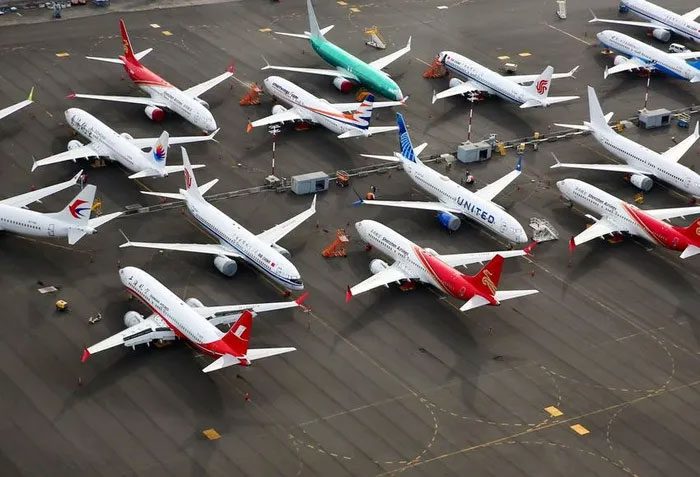Air travel and maritime transportation within the tourism industry emit a significant amount of greenhouse gases, exacerbating climate change.
The summer of 2023 is seen as a booming time for the tourism sector. By the end of July, international tourist numbers worldwide reached 84% of pre-pandemic levels. In some European countries like France, Denmark, and Ireland, the demand for travel even exceeded pre-pandemic figures.
According to The Conversation, this could be a wonderful economic signal. However, the increase in tourists also raises concerns about the environmental and social impacts of the tourism industry.
This summer has also witnessed record heatwaves in many parts of the world, along with wildfires in Greece and Hawaii (USA). Additionally, authorities in popular resort areas in Portugal, Spain, and Turkey have issued warnings about extreme weather conditions.

Passengers at Changi International Airport (Singapore). Transportation activities in the tourism sector create significant emissions. (Photo: THE STRAITS TIMES).
Experts believe that climate change has caused the aforementioned extreme weather phenomena. Among them, transportation activities in the tourism sector emit large amounts of greenhouse gases, which are a primary cause of global warming.
To address the pollution caused by transportation activities within the tourism sector, experts emphasize the importance of changing travel habits and tourism practices among travelers.
Aviation Tourism’s Significant Pollution
From 2013 to 2018, carbon dioxide (CO₂) emissions from commercial airplanes worldwide increased by 32%.
Many countries are striving to use more environmentally friendly fuels to reduce emissions. However, according to The Conversation, for this solution to be effective, the aviation industry must implement additional measures.
One of these measures suggests that ticket prices should increase by 1.4% each year, leading to a decrease in the number of air travelers. However, in reality, many airlines have reduced ticket prices, encouraging more tourists to choose flying as their mode of transportation.
Some European countries are beginning to implement measures to reduce air travel.
Starting April 1, passengers on short-haul flights and older planes in Belgium are subject to increased taxes. This measure aims to encourage people to use public transportation for short distances.
In May, France banned short domestic flights. Spain is expected to implement similar measures in the near future.
According to The Conversation, Germany may also ban short domestic flights in the coming time. In 2021, a survey by the market analysis company YouGov found that 70% of Germans would support such climate change measures if alternative transport options like trains or ferries were available.

Airplanes at King County Airport, Washington (USA). Airplanes are considered one of the primary modes of transportation in the tourism industry. (Photo: REUTERS).
The Pollution Source from Cruise Ships
In addition to aviation, cruise ships also have detrimental effects on the environment.
An investigation by the European Transport and Environment Federation revealed that cruise ships emit four times more sulfur emissions into the atmosphere than all 291 million cars in Europe combined. Sulfur is considered one of the contributors to acid rain and respiratory diseases in humans.
Recognizing the impact of cruise ships, many countries have implemented measures to restrict this mode of transportation.
In July, Amsterdam (Netherlands) banned cruise ships from docking in the city center to reduce tourist numbers and pollution.
In 2019, Venice (Italy) was the most polluted port in Europe due to the large number of cruise ships visiting. Subsequently, the authorities in Venice ordered a ban on large cruise ships entering its waters.
This ban helped improve air pollution in Venice. By 2022, the port of Venice ranked 41st among the most polluted ports in Europe.
Carbon Passports
The negative impacts of the tourism industry on the environment have led many to believe that we need to change our travel habits. In its 2023 analysis report on the future of sustainable tourism, Intrepid Travel suggests that if the tourism industry wants to survive, “carbon passports” should be implemented soon.

Tourists flocking to Slovenia more due to its cool climate. (Photo: GETTY IMAGES).
The carbon passport focuses on giving each traveler an annual carbon limit. Travelers must not use transportation modes that exceed this carbon emission limit. Additionally, the carbon limit in the carbon passport can be allocated across different travel trips.
The idea of personal carbon limits or carbon passports is not new. In 2008, the UK Parliament discussed the concept of “personal carbon trading.” However, this concept was later abandoned as lawmakers found it complex and likely to face public opposition.
According to The Conversation, the average annual carbon emissions per person in the USA is 16 tons, making it one of the highest rates in the world.
In the UK, the average annual carbon emissions per person is 11.7 tons. This figure is still over five times the level recommended by the Paris Agreement, aimed at keeping global temperature rise below 1.5 degrees Celsius compared to pre-industrial levels.
Globally, the average annual carbon emissions per person is nearly 4 tons.
To prevent temperatures from rising above 2 degrees Celsius compared to pre-industrial levels, the average annual carbon emissions per person must drop below 2 tons by 2050. This amount is roughly equivalent to about two round trips between London (UK) and New York (USA).
Intrepid Travel’s report predicts that carbon passports will be operational by 2040.
However, according to The Standard, no government or agency has yet announced plans to implement carbon passports. Therefore, the penalties for exceeding the carbon limits in carbon passports remain a significant question.




















































